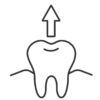Management of Dental Cavities
![]() A dental cavity is commonly noticed when part of the tooth structure is broken, black/brown in color with a hole/patch or when the child complains of food accumulation and pain.
A dental cavity is commonly noticed when part of the tooth structure is broken, black/brown in color with a hole/patch or when the child complains of food accumulation and pain.
![]() Early decay lesions can simply appear as white spots/patches which goes unnoticed and progress to a large cavity with time.
Early decay lesions can simply appear as white spots/patches which goes unnoticed and progress to a large cavity with time.
![]() We treat dental caries/cavity based on individual caries risk of the child. Since our doctors have special interest in minimally invasive pediatric dentistry approach, we try to take care of each cavity in the maximum possible non-destructive manner conserving more of healthy tooth structure.
We treat dental caries/cavity based on individual caries risk of the child. Since our doctors have special interest in minimally invasive pediatric dentistry approach, we try to take care of each cavity in the maximum possible non-destructive manner conserving more of healthy tooth structure.
![]() The sooner we treat a decay the better will be the prognosis.
The sooner we treat a decay the better will be the prognosis.
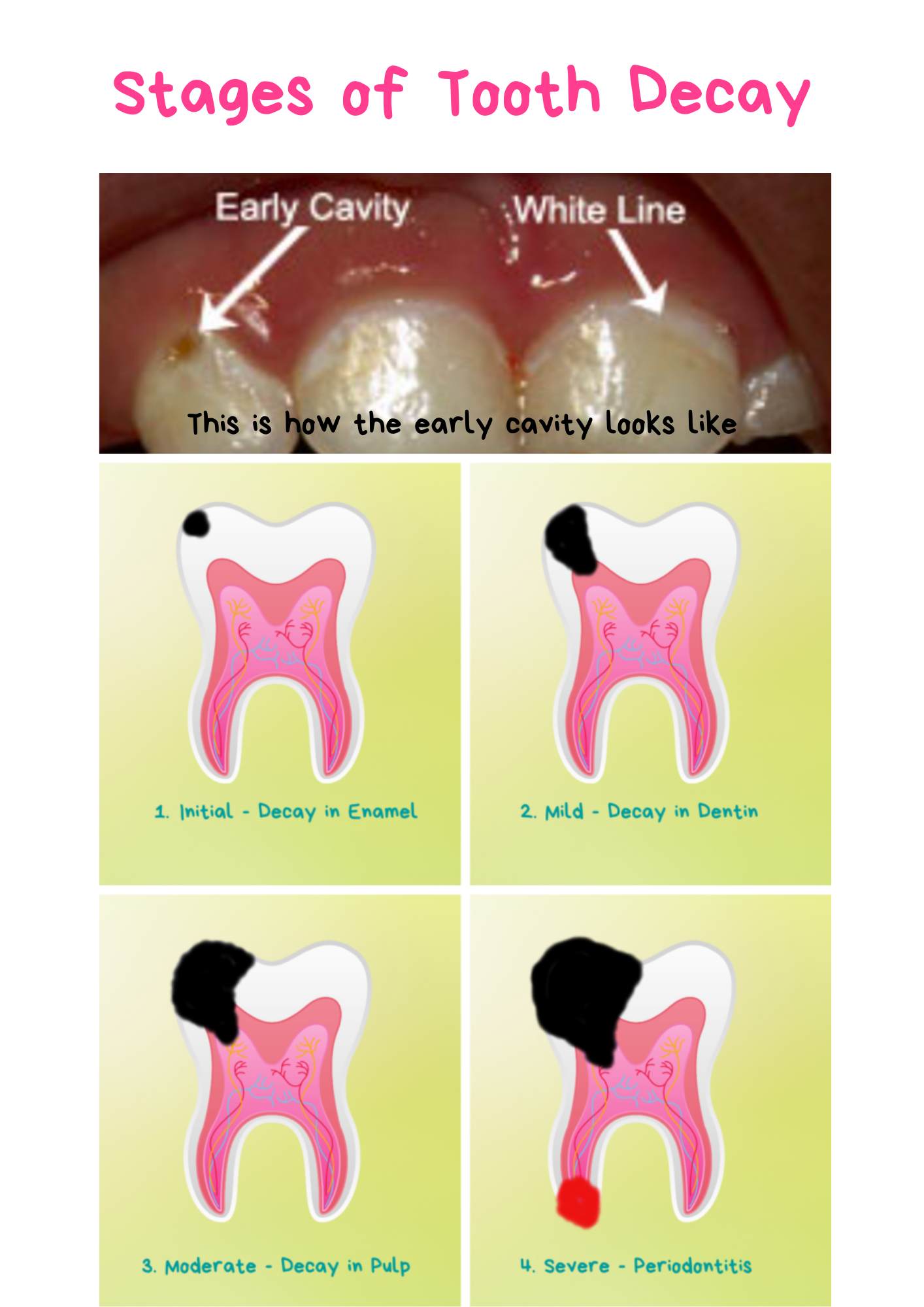
Management of Dental Cavities

![]() A dental cavity is commonly noticed when part of the tooth structure is broken, black/brown in color with a hole/patch or when the child complains of food accumulation and pain.
A dental cavity is commonly noticed when part of the tooth structure is broken, black/brown in color with a hole/patch or when the child complains of food accumulation and pain.
![]() Early decay lesions can simply appear as white spots/patches which goes unnoticed and progress to a large cavity with time.
Early decay lesions can simply appear as white spots/patches which goes unnoticed and progress to a large cavity with time.
![]() We treat dental caries/cavity based on individual caries risk of the child. Since our doctors have special interest in minimally invasive pediatric dentistry approach, we try to take care of each cavity in the maximum possible non-destructive manner conserving more of healthy tooth structure.
We treat dental caries/cavity based on individual caries risk of the child. Since our doctors have special interest in minimally invasive pediatric dentistry approach, we try to take care of each cavity in the maximum possible non-destructive manner conserving more of healthy tooth structure.
![]() The sooner we treat a decay the better will be the prognosis.
The sooner we treat a decay the better will be the prognosis.
Dental Restorations / Cavity fillings
![]() Dental filling is usually done for a mild to moderately decayed cavity.
Dental filling is usually done for a mild to moderately decayed cavity.
![]() Tooth-coloured fillings are the most lifelike material used to fill cavities.
Tooth-coloured fillings are the most lifelike material used to fill cavities.
![]() Glass Ionomer Cement (GIC) is the most popular filling material for milk teeth. Not only it adheres to the tooth structure easily but because of its high fluoride release its an ideal restorative material for children with high caries risk to prevent the further progression of decay.
Glass Ionomer Cement (GIC) is the most popular filling material for milk teeth. Not only it adheres to the tooth structure easily but because of its high fluoride release its an ideal restorative material for children with high caries risk to prevent the further progression of decay.
![]() Composite is another tooth coloured filling material available for milk teeth with excellent retention and prognosis. Usually preferred for a cooperative child as the procedure of composite restoration is technique sensitive.
Composite is another tooth coloured filling material available for milk teeth with excellent retention and prognosis. Usually preferred for a cooperative child as the procedure of composite restoration is technique sensitive.
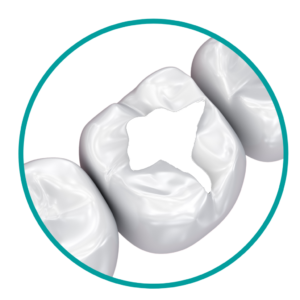
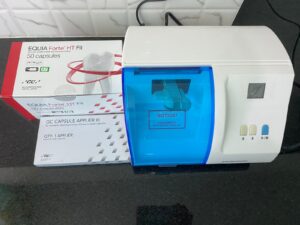
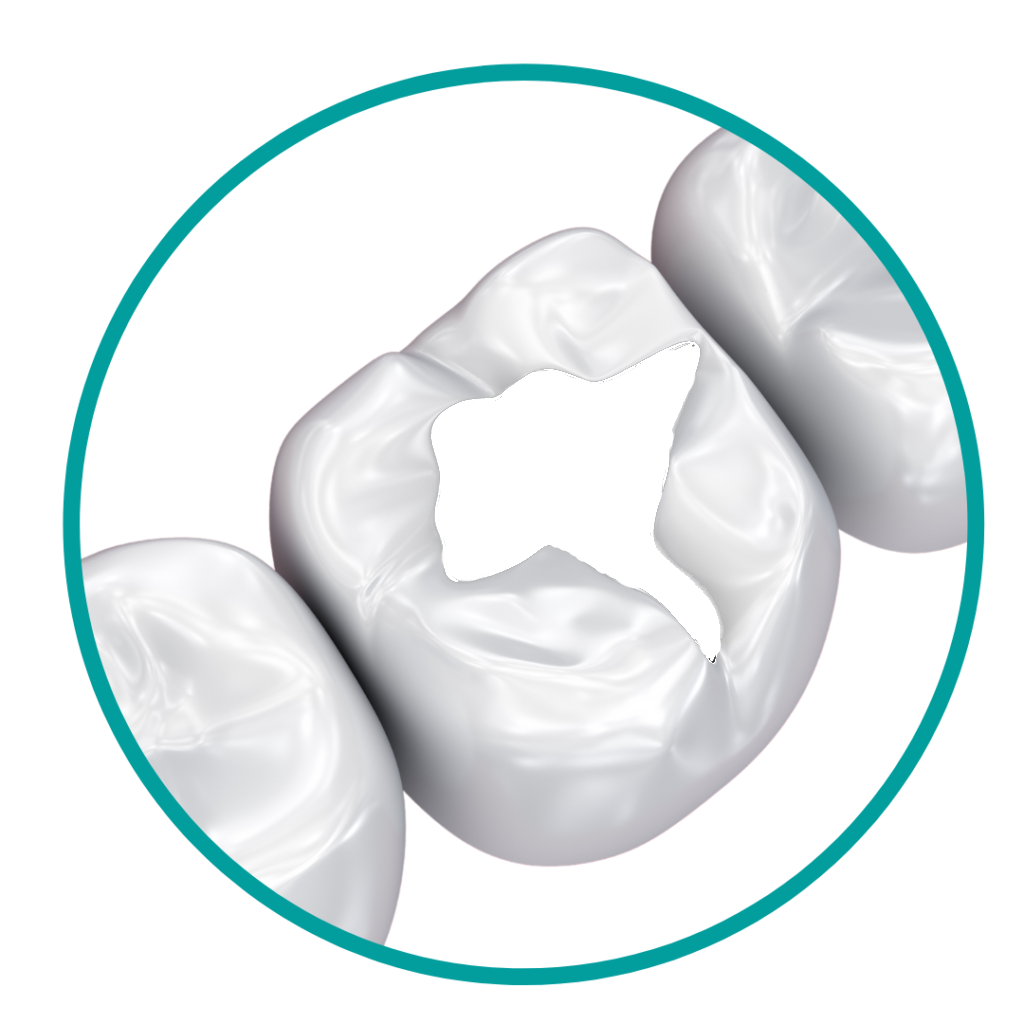
![]() Dental filling is usually done for a mild to moderately decayed cavity.
Dental filling is usually done for a mild to moderately decayed cavity.
![]() Tooth-coloured fillings are the most lifelike material used to fill cavities.
Tooth-coloured fillings are the most lifelike material used to fill cavities.
![]() Glass Ionomer Cement (GIC) is the most popular filling material for milk teeth. Not only it adheres to the tooth structure easily but because of its high fluoride release its an ideal restorative material for children with high caries risk to prevent the further progression of decay.
Glass Ionomer Cement (GIC) is the most popular filling material for milk teeth. Not only it adheres to the tooth structure easily but because of its high fluoride release its an ideal restorative material for children with high caries risk to prevent the further progression of decay.
![]() Composite is another tooth coloured filling material available for milk teeth with excellent retention and prognosis. Usually preferred for a cooperative child as the procedure of composite restoration is technique sensitive.
Composite is another tooth coloured filling material available for milk teeth with excellent retention and prognosis. Usually preferred for a cooperative child as the procedure of composite restoration is technique sensitive.
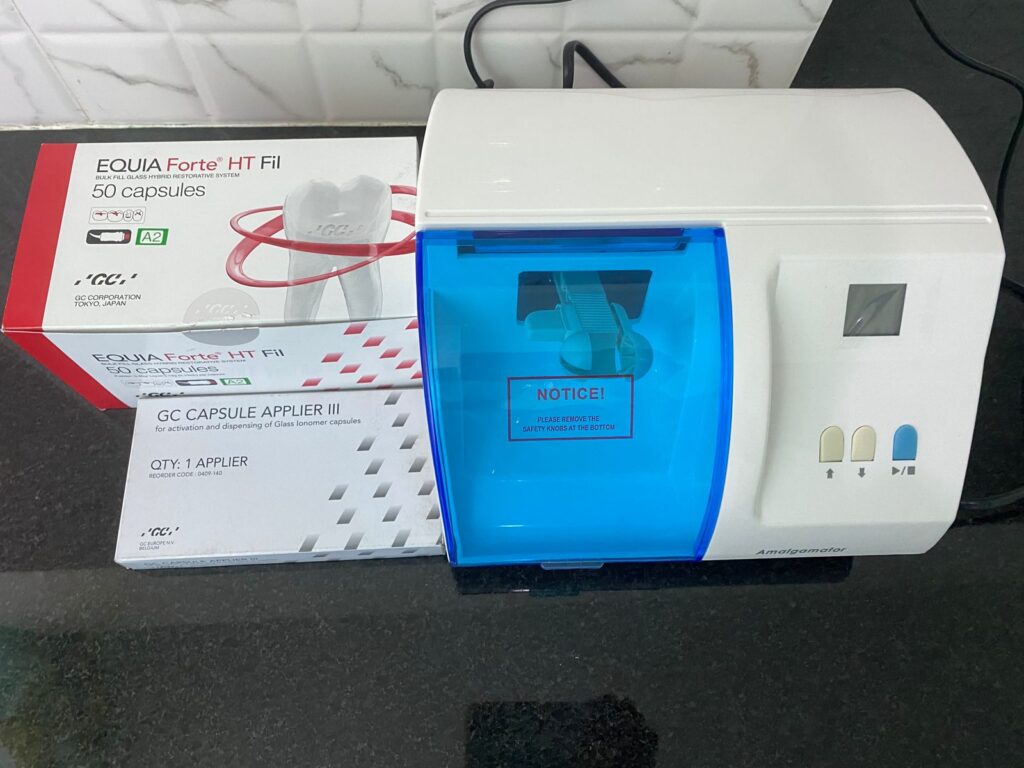
Pulp Therapy / Root Canal Treatment

![]() Pulp therapy or Root canal treatment is recommended for a milk tooth that is severely injured/ decayed.
Pulp therapy or Root canal treatment is recommended for a milk tooth that is severely injured/ decayed.
![]() Pulp tissue/nerve of the tooth commonly gets damaged and infected with bacteria due to deep dental decay/injury which in turn results in a dead tooth over a period of time.
Pulp tissue/nerve of the tooth commonly gets damaged and infected with bacteria due to deep dental decay/injury which in turn results in a dead tooth over a period of time.
![]() If left untreated there is high possibility of abscess (pus) formation, gum and cheek swelling, severe pain, disturbance in the development of underlying permanent tooth and finally early loss of the decayed tooth.
If left untreated there is high possibility of abscess (pus) formation, gum and cheek swelling, severe pain, disturbance in the development of underlying permanent tooth and finally early loss of the decayed tooth.
![]() Purpose of pulp therapy
Purpose of pulp therapy
To save the milk tooth so that it will maintain its position in the arch & function until it’s natural exfoliation.
![]() Procedure
Procedure
Pulp therapy of a milk tooth is similar to root canal treatment of a permanent tooth.
Based on the grade of infection/decay, patient symptoms and cooperation ability, our specialists decide the number of visits required for the completion of the procedure.
A pulpotomy is advised if the pulp tissue infection is limited to the coronal (crown) part of the tooth, with no spontaneous pain. Where only the infected coronal pulp is removed and filled with suitable medicament and restoration.
If the pulp tissue infection is present beyond the coronal (crown) part of the tooth, then pulpectomy is advised. By means of pulpectomy, the infected pulp tissue/nerve of the tooth is removed & a suitable biocompatible root canal material is filled in that space.
Once Pulp therapy is completed a suitable full coverage restoration ( Dental crown/cap) is placed over the tooth to help the treated tooth function naturally and survive till exfoliation.
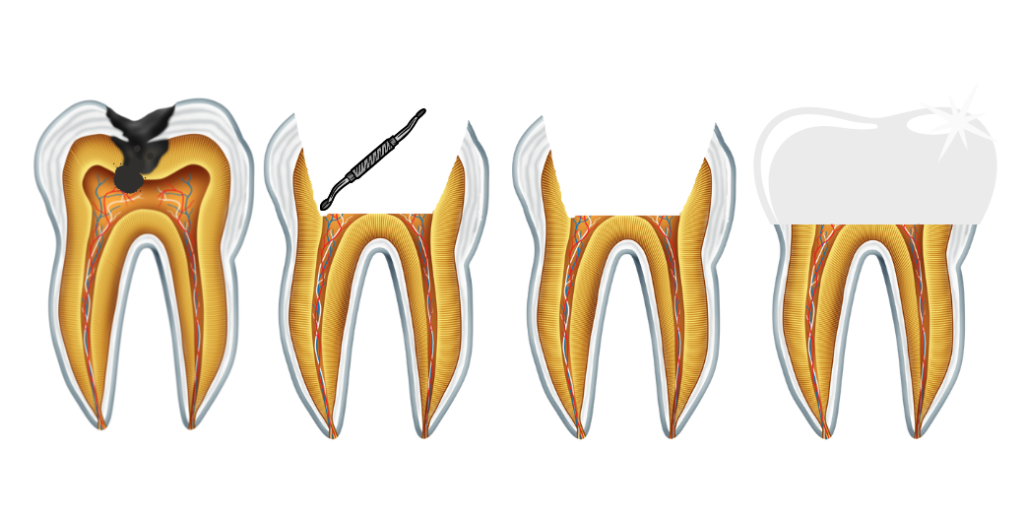
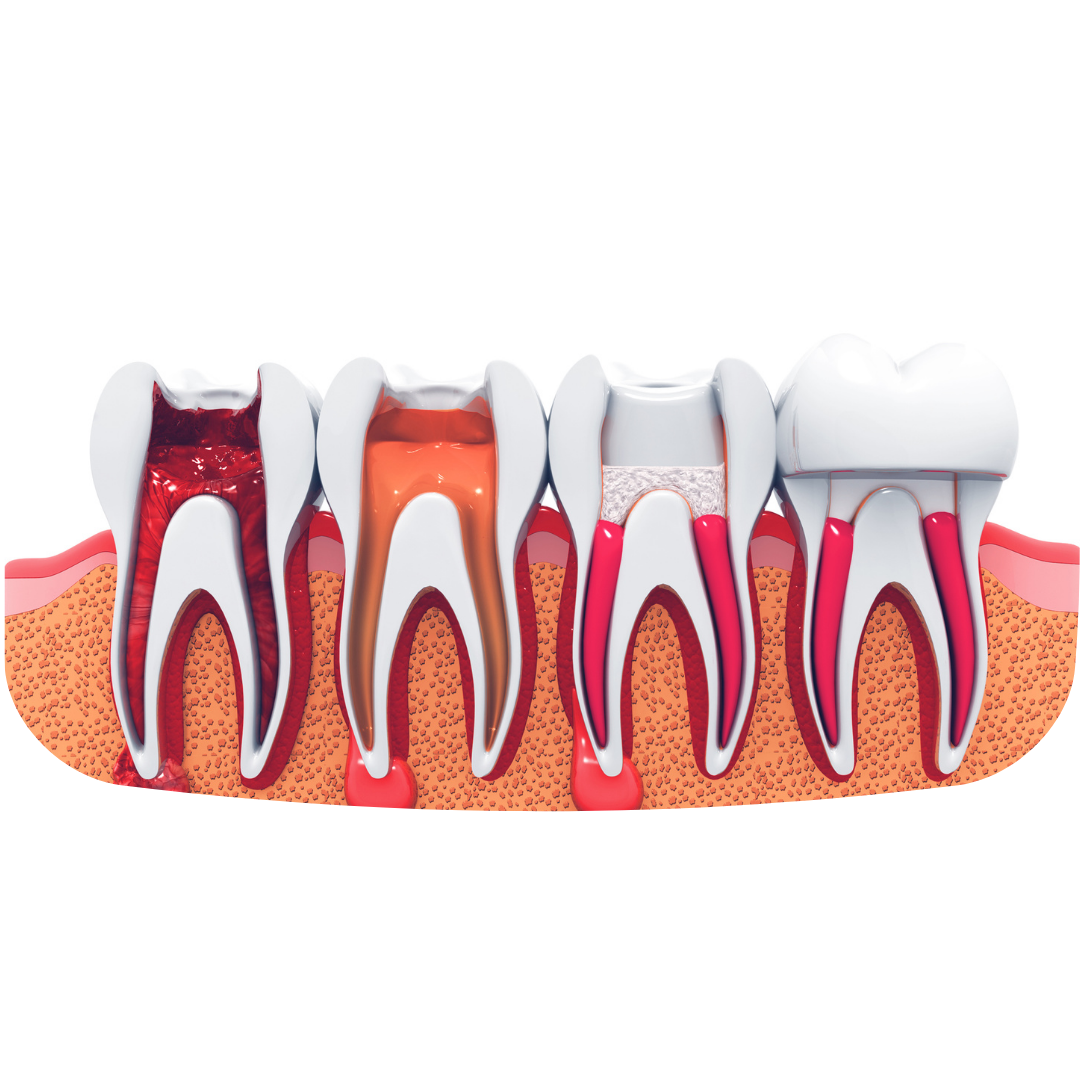


![]() Purpose of pulp therapy
Purpose of pulp therapy
To save the milk tooth so that it will maintain its position in the arch & function until it’s natural exfoliation.
![]() Procedure
Procedure
Pulp therapy of a milk tooth is similar to root canal treatment of a permanent tooth.
Based on the grade of infection/decay, patient symptoms and cooperation ability, our specialists decide the number of visits required for the completion of the procedure.
A pulpotomy is advised if the pulp tissue infection is limited to the coronal (crown) part of the tooth, with no spontaneous pain. Where only the infected coronal pulp is removed and filled with suitable medicament and restoration.
If the pulp tissue infection is present beyond the coronal (crown) part of the tooth, then pulpectomy is advised. By means of pulpectomy, the infected pulp tissue/nerve of the tooth is removed & a suitable biocompatible root canal material is filled in that space.
Once Pulp therapy is completed a suitable full coverage restoration ( Dental crown/cap) is placed over the tooth to help the treated tooth function naturally and survive till exfoliation.
Dental Crowns / Caps
![]() What is a Dental Crown
What is a Dental Crown
Dental Crown/Cap is a full coverage restoration that completely covers the tooth structure. Commonly used to restore damaged or decayed teeth in children.
![]() Why is it needed
Why is it needed
Following a pulp treatment ( Pulpectomy, Pulpotomy, Pulp capping) , multi surface restoration, large restoration or in case of repeated failure of a restoration the milk tooth loses its original strength to function properly in turn resulting in a questionable prognosis.
Placing a dental crown in the above mentioned conditions not only covers the entire tooth but also provides the original strength to serve ( in chewing) like before and survive till natural exfoliation.
A crown once placed not only maintains the shape and contour of the tooth but also controls further damage of the treated tooth.
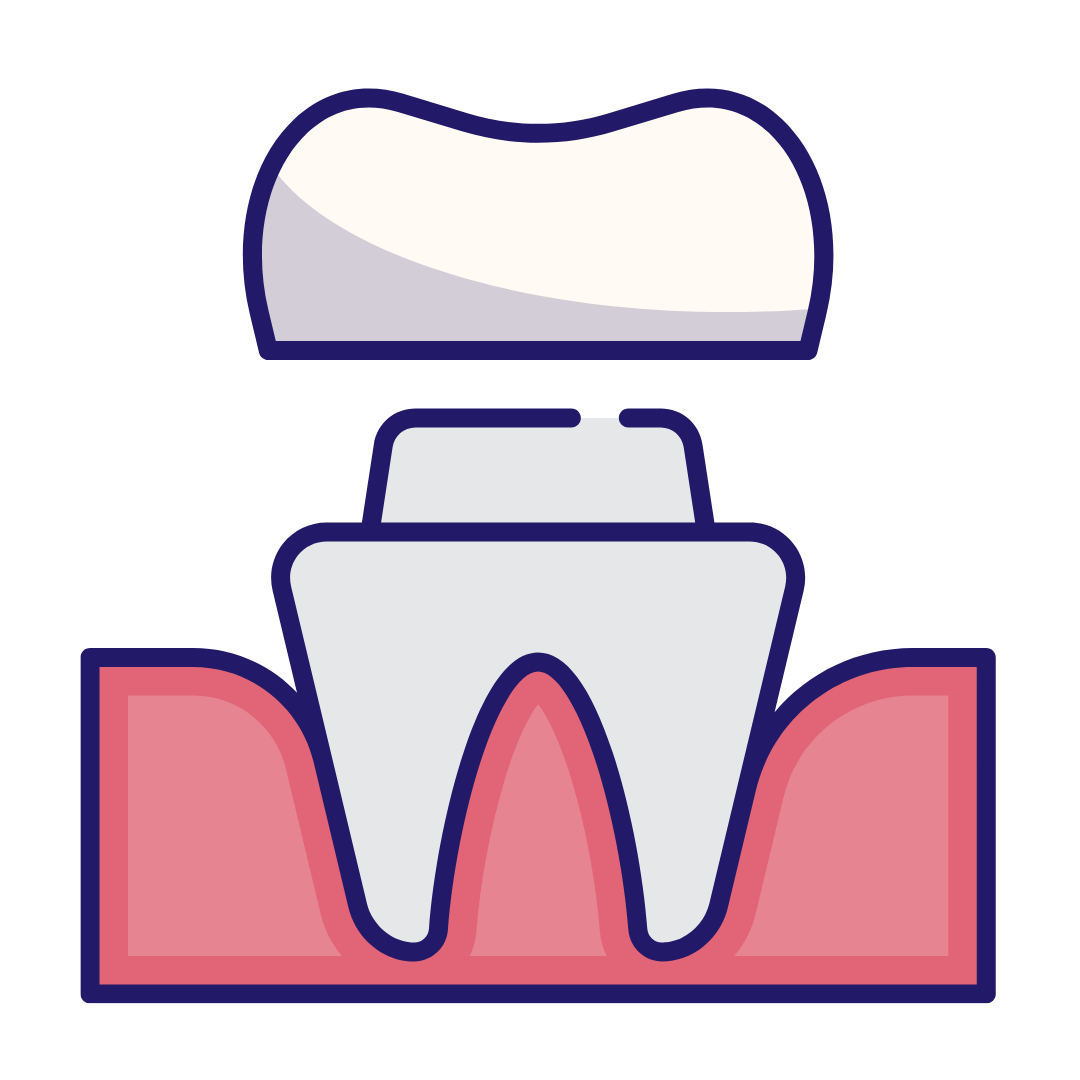
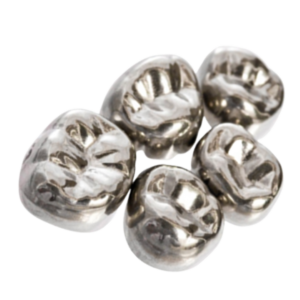
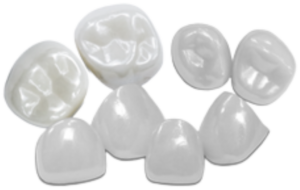
![]() What are types of crown available?
What are types of crown available?
Dental crowns available for milk teeth are preformed ( readymade) and standardized.
Based on the treated tooth size a suitable crown is placed.
For front teeth : Resin strip crowns, Zirconia crowns (Tooth colored).
For back teeth : Metal (stainless steel) crowns, Zirconia crowns (Tooth colored).
![]() Which is the best dental crown?
Which is the best dental crown?
Based on the treated tooth condition, position of the tooth, age and cooperation ability of the child, our specialists decide the best possible crown/cap for your little one. It may vary from one tooth to the other and one patient to the other.
![]() Note
Note
We advise parents to follow the diet and crown care instructions provided by our specialists following placement of a dental cap in order to have long term success and retention.
With proper care and maintenance a crown placed for a primary tooth naturally comes out with the tooth at the time of exfoliation. There is no need of separate removal of the crown.
Extraction
![]() Extraction/removal of tooth is the last option that no one really wants but in certain cases we have to remove the tooth.
Extraction/removal of tooth is the last option that no one really wants but in certain cases we have to remove the tooth.
![]() Most common conditions when a primary tooth is advised for extraction
Most common conditions when a primary tooth is advised for extraction
Grossly decayed tooth, dental abscess, badly injured lose tooth, extra tooth, over retained tooth that has not fallen on time, as a part of orthodontic treatment plan etc.


![]() Procedure of extraction
Procedure of extraction
Commonly extraction is done under local anaesthesia infiltration to make it painless and comfortable for the child.
If it’s a loose tooth we prefer using topical anaesthetic gel for extraction.
Post extraction the parents/child are provided with written instruction and medication prescription.
Following extraction within a week’s time complete healing is achieved.
![]() Note:
Note:
We advise parents to follow the post extraction instruction provided by our specialists thoroughly in order to avoid any adverse effect.
Minimally Invasive Treatment Approach
The more the merrier is no longer applicable in the field of dentistry. With advancement of newer technology & availability of biomimetic materials the minimally invasive treatment approach has been favored.
![]() The main objective of Minimally Invasive Dentistry
The main objective of Minimally Invasive Dentistry
To preserve maximum natural uninfected carious ( decayed ) tissue.
To repair the carious lesion rather than replacing it.
![]() Types of Minimally Invasive treatment approach:
Types of Minimally Invasive treatment approach:

![]() What is Silver Diamine Fluoride (SDF)
What is Silver Diamine Fluoride (SDF)
It is a clear antimicrobial liquid containing silver and fluoride applied on the decayed portion of a tooth with the help of a small sterile brush.
![]() How does Silver Diamine Fluoride (SDF) work
How does Silver Diamine Fluoride (SDF) work
The silver component in the SDF is antimicrobial that kills the active bacteria responsible for tooth decay and prevents further growth of bacteria in that lesion.
The fluoride component in SDF is very high causing effective remineralization thereby arrest the decayed lesion and prevent further decay.
![]() Is SDF application a painless procedure
Is SDF application a painless procedure
Yes ! SDF application is a completely painless procedure demanding least cooperation from the child.
Application of SDF doesn’t require any specific armamentarium.
The entire procedure is quick requiring only couple of minutes for completion.
![]() Is SDF application beneficial in Early Childhood Caries
Is SDF application beneficial in Early Childhood Caries
Early childhood caries appears at a very young age of 1-3 yrs. At that age cooperation of the baby for a restorative care is unimaginable. However, the process of decay needs to be paused. During such situations use of SDF can be helpful.
Since the entire procedure is painless, age and cooperation ability of the baby doesn’t affect the procedure.
![]() Is SDF application helpful in children with special health needs :
Is SDF application helpful in children with special health needs :
Yes ! In children with special health need and limited cooperation ability SDF serves as a prime antimicrobial & remineralizing agent to combat early tooth decay.
This not only reduces further need of complicated treatment for the child but provides psychological assurance to the parents.
![]() Note:
Note:
SDF can’t be used in advanced decay cases where there is : continuous pain/swelling or abscess. SDF is applicable for asymptomatic teeth
The esthetic appearance following SDF application could be a concern for many parents as it appears dark black due to the silver component hence prior to carrying out this procedure we make sure to have a clear discussion with parents and take informed consent for the same.
![]() What is SMART
What is SMART
Few cases of dental decay require both remineralization and restoration to serve better & survive longer in the oral cavity.
In such cases following SDF application either a suitable restoration/filling is placed, or a full coverage crown is placed based on the condition of the existing tooth.
![]() Procedure of SMART
Procedure of SMART
As the procedure is atraumatic restorative therapy, we want to assure parents that the entire procedure is going to be painless for the child and atraumatic( no drilling) for the tooth.
We prefer doing SMART procedure in 2-3 appointments in order to obtain effective remineralization of the decayed lesion.
![]() What is Hall’s technique?
What is Hall’s technique?
Not every decayed tooth requires conventional tooth preparation ( cutting of tooth structure) for a crown to be placed. Since we practice Minimally Invasive Pediatric Dentistry we prefer to repair the decayed part and preserve the remaining tooth structure as it is.
By means of Hall’s technique we avoid unnecessary drilling and place elastic separators in between adjacent teeth to create minimum gap for the crown to be placed comfortably.
This technique is commonly applicable for molar/back teeth.
![]() What are the benefits of Hall’s technique?
What are the benefits of Hall’s technique?
Since the technique involves no drilling, it is appropriate for young, anxious, fearful and uniquely abled ( special) children with less cooperation ability.
Crowns placed with hall’s technique completely covers the treated tooth thereby protects the entire tooth from bacterial attack and further damage thereby reduces the chances of repeated failure.
![]() Resin Infiltration is a simple, effective, micro-invasive procedure for treating white spot lesions early in early childhood decay and molar incisor hypomineralization condition.
Resin Infiltration is a simple, effective, micro-invasive procedure for treating white spot lesions early in early childhood decay and molar incisor hypomineralization condition.
![]() This procedure is painless, and there is no use of anesthesia; therefore, patient cooperation is not a concern.
This procedure is painless, and there is no use of anesthesia; therefore, patient cooperation is not a concern.
![]() Compared to teeth whitening, Resin infiltration provides comparatively long-term benefit in terms of removal or lightening of the white spot lesion or hypo mineralized appearance.
Compared to teeth whitening, Resin infiltration provides comparatively long-term benefit in terms of removal or lightening of the white spot lesion or hypo mineralized appearance.




